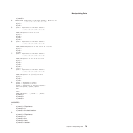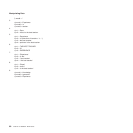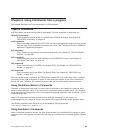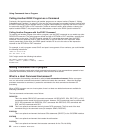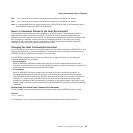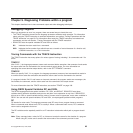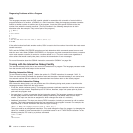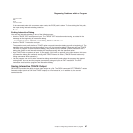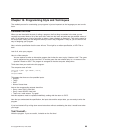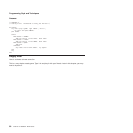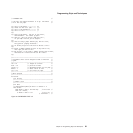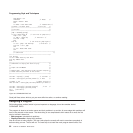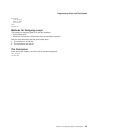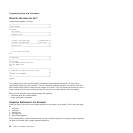instruction2
END
ELSE
instructionA
If the command ends with a nonzero return code, the ELSE path is taken. To force taking the first path,
the input during interactive debug could be:
RC=0
Ending Interactive Debug
You can end interactive debug in one of the following ways:
v Use the TRACE OFF instruction as input. The TRACE OFF instruction ends tracing, as stated in the
message at the beginning of interactive debug:
+++ Interactive trace. TRACE OFF to end debug, ENTER to continue. +++
v Use the TRACE ? instruction as input
The question mark prefix before a TRACE option can end interactive debug as well as beginning it. The
question mark reverses the previous setting (on or off) for interactive debug. Thus you can use TRACE
?R within a program to start interactive debug, and provide input of another TRACE instruction with ?
before the option to end interactive debug but continue tracing with the specified option.
v Use TRACE with no options as input. If you specify TRACE with no options in the input stream, this turns
off interactive debug but continues tracing with TRACE Normal in effect. (TRACE Normal traces only
failing commands after execution.)
v Let the program run until it ends. Interactive debug automatically ends when the program that started
tracing ends. You can end the program prematurely using as input an EXIT instruction. The EXIT
instruction ends both the program and interactive debug.
Saving Interactive TRACE Output
REXX/CICS provides the ability to route trace output to a file. The REXX command SET TERMOUT routes
linemode output (such as SAY and TRACE output) to a file instead of, or in addition to, the current
terminal device.
Diagnosing Problems within a Program
Chapter 9. Diagnosing Problems within a program 87



